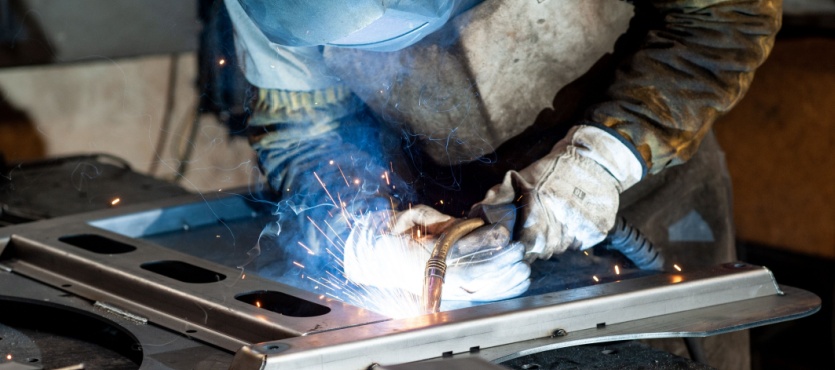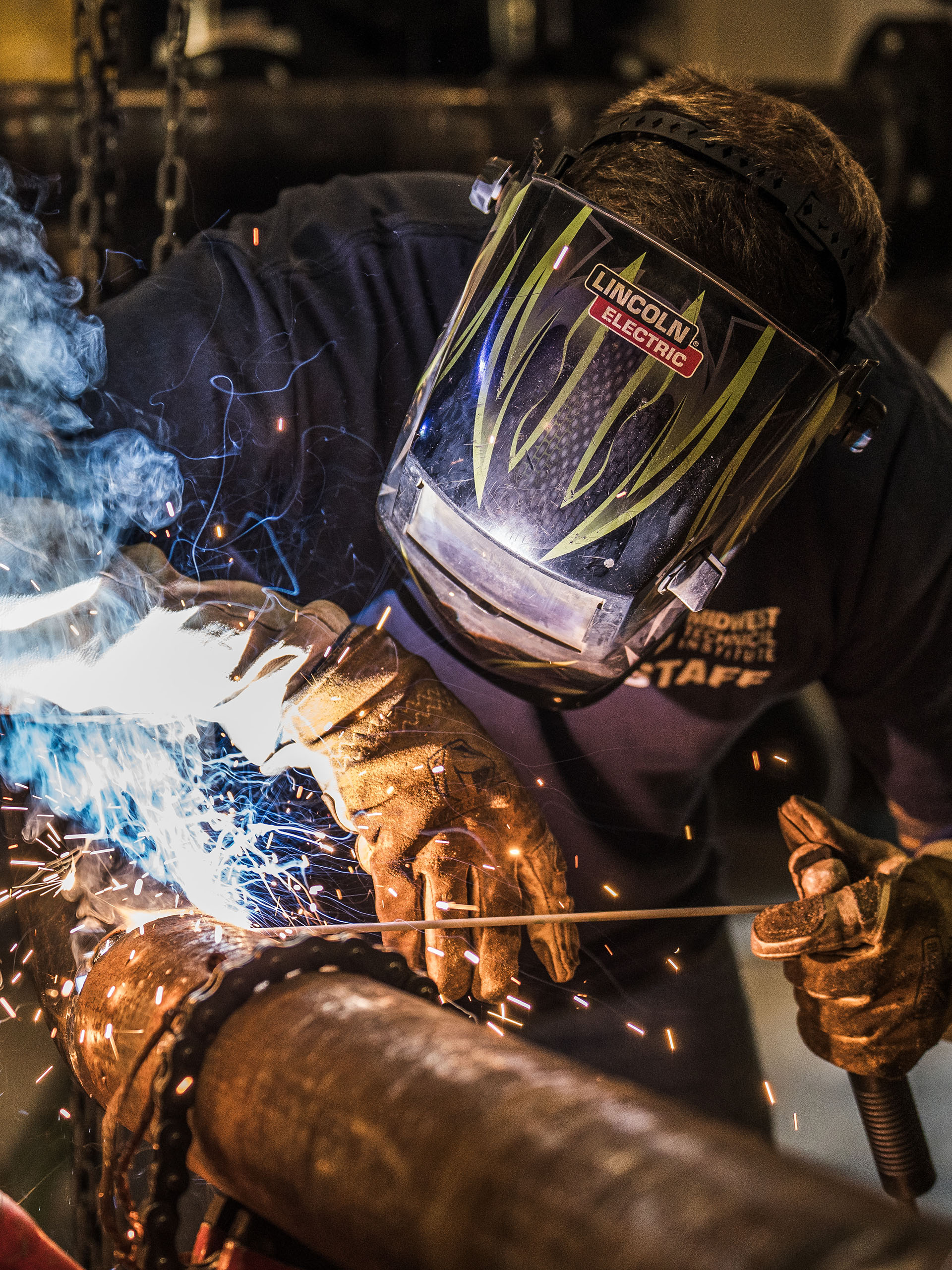Typical Welding Repair Issues and How to Address Them Efficiently
Welding repairs usually experience a series of issues that can threaten the integrity of the end product. Typical troubles consist of insufficient infiltration, porosity, and misalignment, to name a few. Each issue presents special obstacles that need details strategies for resolution. Comprehending these issues is important for welders intending to enhance their abilities and results. This discussion will discover these common welding fixing issues and effective techniques to address them.
Inadequate Penetration
Inadequate penetration takes place when the weld metal stops working to fully fuse with the base material, leading to weak joints and prospective architectural failings. This concern commonly originates from not enough warm input, inaccurate electrode angle, or incorrect welding rate. Welders might come across insufficient infiltration because of a mistake of the needed criteria for a certain material thickness or type. Furthermore, contamination on the base product's surface can impede efficient bonding, intensifying the problem. To resolve insufficient penetration, welders must assure appropriate setups on their devices and maintain a clean job surface area. Regular examination of welds is suggested to recognize any kind of deficiencies early, permitting prompt modifications and the avoidance of jeopardized architectural stability in welded settings up.
Porosity
Porosity is an usual flaw in welded joints that manifests as tiny gas bubbles trapped within the weld steel. This problem can compromise the honesty of the weld, leading to reduced stamina and prospective failure under stress and anxiety. Montana Mobile Welding and Repair Welding. Porosity commonly develops from contamination, wetness, or improper welding strategies, which enable gases to escape right into the liquified weld swimming pool. To attend to porosity, welders ought to guarantee correct surface prep work, keep a clean workplace, and utilize suitable welding parameters. Furthermore, choosing the best filler material and shielding gas can mitigate gas entrapment. Routine inspection and screening of welds can assist recognize porosity early, guaranteeing prompt restorative actions are taken, thereby maintaining the quality and dependability of the welded framework
Misalignment
Imbalance in welding can occur from different elements, consisting of incorrect arrangement and thermal growth. Comprehending the source is crucial for effective resolution. A number of correction techniques are readily available to straighten elements and guarantee structural integrity.
Sources of Misalignment
Welding misalignment commonly originates from a variety of underlying problems that can compromise structural stability. One key cause is improper fit-up of parts before welding, which can result in voids and irregular surfaces. Variants in thermal expansion during the welding process can also result in distortion, especially if the products being signed up with have various coefficients of growth. Additionally, poor securing and fixturing might fall short to hold components safely in area, leading to movement during welding. Improperly maintained equipment, including welding machines and tools, might introduce incongruities in the weld grain, more adding to misalignment. Operator mistake, stemming from inadequate training or experience, can additionally play a considerable duty in producing misaligned welds.

Modification Strategies Readily Available
Resolving misalignment efficiently calls for a mix of restorative strategies tailored to the particular problems available. One usual technique is making use of fixtures or jigs to hold parts in the right setting during welding, guaranteeing regular placement. Additionally, preheating the materials can help in reducing distortion and boost fit-up. For significant misalignment, mechanical realignment methods, such as utilizing hydraulic jacks or clamps, can be utilized to fix the setting prior to welding. Post-weld warm treatment may likewise be essential to eliminate tensions brought on by misalignment. Mindful examination and modification throughout the arrangement phase can prevent misalignment concerns from coming to be considerable troubles, promoting a smoother welding procedure and improving general structural stability.
Distortion
Distortion is a typical obstacle in welding that can arise from different elements, including unequal heating & cooling. Recognizing the sources of distortion is vital for applying reliable prevention techniques. Addressing this problem not just improves architectural honesty but also enhances the general high quality of the weld.
Sources of Distortion
When based on the intense warm of welding, materials usually undergo modifications that can result in distortion. This sensation primarily occurs from thermal growth and contraction throughout the welding process. As the weld location warms up, the material expands; upon cooling, it gets, which can create interior stress and anxieties. Furthermore, unequal heating across a work surface can worsen these anxieties, causing warping or bending. The kind of product additionally plays a significant role; steels with differing thermal conductivity and coefficients of expansion may react differently, resulting in unforeseeable distortions. Bad joint style and inadequate fixturing can contribute to misalignment throughout welding, enhancing the chance of distortion. Recognizing these causes is important for effective welding repair work and prevention approaches.
Avoidance Techniques
Reliable avoidance techniques for distortion throughout welding focus on regulating warm input and ensuring appropriate joint design. Keeping a constant heat input helps to reduce thermal expansion and contraction, which can lead to distortion. Using strategies such as pre-heating the workpiece can likewise lower the temperature level gradient, promoting uniform heating. In addition, choosing appropriate joint designs, such as T-joints or lap joints, can improve security and reduce stress focus. Implementing proper fixturing to secure the work surfaces in location further aids in keeping placement during the welding process. Ultimately, staggered welding series can distribute warmth extra equally, avoiding localized distortion. By applying these techniques, welders can substantially reduce the chance of distortion and improve the overall high quality of their welds.
Cracking
Cracking is a typical issue run into in welding fixings, often resulting from numerous factors such as improper cooling prices, material option, or insufficient joint preparation. The occurrence of splits can substantially jeopardize the stability of the weld, bring about possible failures throughout operation. To resolve this issue, welders should initially examine the source, guaranteeing that products are suitable and appropriately picked for the certain application. In addition, regulating the cooling price throughout the welding procedure is vital; fast air conditioning can generate stress and anxiety and lead to breaking. Appropriate joint style and prep work additionally add to decreasing the danger. Applying these strategies can improve weld quality and resilience, ultimately minimizing the probability of cracking in finished weldments.

Incomplete Blend
A significant concern in welding fixings is incomplete combination, which happens when the weld steel does not properly bond with the base product or previous weld passes - Belgrade Fabrication. This issue can bring about weak points in the joint, possibly compromising the integrity of the welded framework. Variables contributing to insufficient combination include insufficient warmth input, inappropriate welding technique, and contamination of the surface areas being joined. To address this problem efficiently, welders need to guarantee appropriate pre-weld cleansing and surface area preparation, in addition to adjust their welding criteria to achieve sufficient infiltration and fusion. Normal assessment throughout the welding procedure can likewise aid recognize insufficient blend early, enabling for prompt restorative measures to improve the general high quality of the weld
Overheating
While welding repair work can boost structural honesty, overheating provides a significant difficulty that can result in material deterioration. Extreme warm throughout welding can change the mechanical homes of steels, leading to lowered stamina, boosted brittleness, and warping. This sensation is especially important in high-stress applications where structural integrity is vital. Recognizing getting too hot can include visual inspections for discoloration or distortion, in addition to keeping track of temperature throughout the welding process. To alleviate the threats related to getting too hot, welders need to employ proper strategies, such as controlling heat input, adjusting travel rate, and making use of suitable filler materials. In addition, carrying out pre- and post-weld warm therapies can assist bring back product residential or commercial navigate to this site properties and improve the general quality of the fixing, guaranteeing long-lasting performance and safety and security.
Often Asked Questions
What Are the Typical Indications of a Welding Flaw?

Exactly How Can I Evaluate My Welds for High quality?
To check welds for quality, one can make use of visual assessments, ultrasonic testing, and radiographic techniques. Each method guarantees architectural integrity, recognizes defects, and confirms adherence to specified criteria, eventually boosting the reliability of the welded joints.
What Security Precautions Should I Take While Welding?
When welding, one ought to focus on safety and continue reading this security by wearing proper personal safety devices, making certain proper ventilation, safeguarding flammable products away, keeping a tidy work space, and understanding surroundings to stop mishaps and injuries.
Can I Repair a Weld Without Redoing the Entire Joint?
Fixing a weld without redesigning the entire joint is possible, depending upon the damages (Montana Mobile Welding and Repair Welding). Methods such as grinding, including filler product, or utilizing a welding process can properly attend to particular flaws while preserving the surrounding structure
What Equipment Are Necessary for Efficient Welding Repairs?
Important tools for reliable welding fixings consist of a welding device, cable brush, mill, safety gear, clamps, and filler materials. Each device plays a vital function in ensuring top quality and safety during the repair work procedure. Porosity normally develops from contamination, wetness, or incorrect welding methods, which permit gases to get away right into the molten weld pool. Improperly kept tools, including welding devices and tools, may introduce variances in the weld grain, more contributing to misalignment. When subjected to the intense warmth of welding, materials typically undergo modifications that can lead to distortion. Splitting is a common concern encountered in welding repair work, often resulting from see this website numerous elements such as improper cooling prices, product choice, or poor joint prep work. A substantial concern in welding fixings is incomplete combination, which takes place when the weld metal does not properly bond with the base material or previous weld passes.